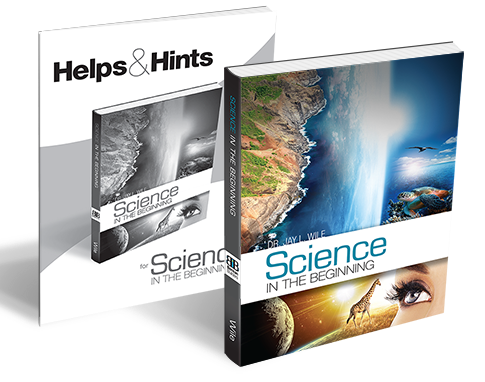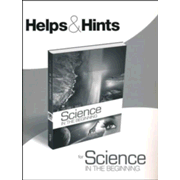Dr. Jay Wile, author of the original Exploring Creation science courses for junior and senior high (precursors to the present series published by Apologia Educational Ministries), has written the Science in History series, a science curriculum for the elementary grades. The titles of the five courses in the series are:
- Science in the Beginning
- Science in the Ancient World
- Science in the Scientific Revolution
- Science in the Age of Reason
- Science in the Industrial Age
- Note: Science in the Atomic Age might be considered the sixth book in the series, but I review it separately.
This Science in History series is built around three unusual features that result in a unique science curriculum. First of all, every lesson has a hands-on activity or experiment. The activity is generally introduced briefly, then detailed instructions walk you through each activity while students making their own observations. After the activity, the text discusses what the student should have seen or experienced. That activity serves as the jumping-off point to explore a scientific concept. Activities generally use simple household items, but sometimes you will need a few items that will take a little more effort to find such as a bird feather, iodine, or a live earthworm. Lists of required items are at the front of each book. The textbook alerts you well in advance when something needs to be prepared for a particular lesson. Occasionally a lesson will require particular circumstances, such as a sunny day, so you are forewarned and can plan accordingly, possibly rearranging lessons to align with the weather or other factors. While you will be using many items for the activities, the cost should be minimal.
The second unusual feature is that the courses explore science in chronological order. The first course draws its themes from the days of creation. From there, courses proceed chronologically, telling the stories of important scientists and their discoveries. This approach helps students understand how scientific understanding continually expands as scientists build upon the work and discoveries of those who have gone before them. Students study pertinent scientific concepts relating to each time period. Families might want to try to coordinate their history studies with the science curriculum some years, although that probably won’t work well every year.
Thirdly, courses are designed so that all elementary-level children in your family can participate in lessons together.
I think it's important to add that the courses teach a Christian worldview. While this isn't emphasized in every lesson, worldview perspectives are frequently raised.
Lessons and Notebooks
Each course consists of a hardcover textbook and a softcover Helps and Hints booklet. All courses are presented in six units, with 15 lessons per unit. Three lessons in each unit are optional "challenge" lessons. If a student intends to complete all 90 lessons in the course, he will need to complete approximately one lesson every other school day. Skipping the optional challenge lessons will allow him to complete two lessons per week, a slightly slower pace.
The textbooks have numerous, full-color illustrations and both a glossary and an index at the back. The print is large enough that a parent should be able to read while holding the book far enough away that children can simultaneously look at the illustrations. Lessons are taught directly from the textbooks, so parents and students share the same book. After you have introduced a lesson with an activity, the lesson material is presented in about two pages. This can be read aloud and discussed. It includes some vocabulary words that are presented with explanations that make them easier to recall, but the courses are not vocabulary intensive.
Each lesson concludes with a Lesson Review, which is divided into three sections for "younger," "older," and "oldest" students. Dr. Wile uses these designations loosely rather than for designated grade levels. Younger students (non-writers) are given two comprehension questions to answer orally. Older and oldest students will create their own notebooks. Generally, the oldest students will do what the older students do plus at least one additional activity. Often the additional activities involve higher levels of thinking or research. Older and oldest students might draw and label the items they are studying. They might research books, magazines, or the internet for information or illustrations. They might explain a scientific concept such as why oil and water don’t mix or the difference between a bird’s bill or beak. (Examples are from Science in the Beginning, pp. 208 and 223.)
While Dr. Wile believes that older and oldest students should create their own notebooks for these courses, he recognizes that some parents appreciate having separate notebooks in which students can complete their work on pre-formatted pages. So he has created free, downloadable notebook pages (available at the publisher's website), with different versions for older and oldest students. (These same pages are available through some resellers as printed, coil-bound books in case you don't want to figure out how to get them printed and bound yourself.) Since Dr. Wile prefers that students learn to document their lab work without pre-formatted pages, there are blank pages within each chapter's notebook pages that challenge students to write up lab work following instructions given in each textbook. You might want to check out the Binder-Builders are available for the first three of these courses. Binder Builders provide template pages for creating the notebooks.
The Helps and Hints booklets for each course provide answers to the lesson review questions, and they also have two reproducible tests for each unit and answer keys. Dr. Wile does not recommend tests, but he provides them for parents who want to use them.
Science in the Beginning
Science in the Beginning, the first course, uses the days of creation as the organizing theme. The text presents lessons within six units for the six days of creation, with a brief summation of the seventh day when “God rested.”
The courses present solid science content. For example, the unit on the fifth day of creation begins by introducing the concept of classification. Then it teaches about saltwater and freshwater, osmosis and diffusion, vertebrates and invertebrates, movement of vertebrates in water, birds, and flight. Concepts are taught in relation to the themes, making each unit a bit similar to a unit study.
While a biblical worldview underlies this and other Science in History courses, and there are specific references to scripture, the emphasis in this first course is on “God as Creator” rather than on a particular position such as “young earth” or “old earth.” In the first course, Dr. Wile points out that human beings have much in common with the great apes, but rejects the idea that they are related. The word evolution isn’t mentioned. The course isn’t likely to be used by those who want to teach evolution. On the other hand, it should be very useful for those who hold to a creation model regarding the origin of life and view human beings as a special creation.
Science in the Ancient World
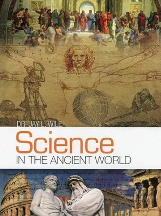 Second in this series is Science in the Ancient World. The six units in this course are directly correlated to time periods, so Science in the Ancient World should work well alongside a world history course that begins with ancient times and works up to the early Renaissance.
Second in this series is Science in the Ancient World. The six units in this course are directly correlated to time periods, so Science in the Ancient World should work well alongside a world history course that begins with ancient times and works up to the early Renaissance.
The first two units focus on science before Christ, and most of what we know of early science comes to us from the Greeks. Dr. Wile does not just present the science topics and discoveries only as the Greeks taught them. For example, Hippocrates taught that the body contains four humors: blood, yellow bile, black bile, and phlegm. Dr. Wile explains how Hippocrates drew this conclusion, but he also explains what Hippocrates missed. In lessons 12 through 15, Dr. Wile explains what scientists have since discovered about blood, bile, and phlegm. As usual, activities help even the youngest students grasp the concepts.
Subsequent units continue through "Science Soon After Christ," "Science in the Early Middle Ages," "Science in the Late Middle Ages," and "Science in the Early Renaissance."
The point I want to stress is that Science in the Ancient World is both a history of science as well as a treatment of modern science. Because historical chronology dictates the topics, the study of science jumps around rather than dealing with just earth science or life science. However, I think this approach makes science totally fascinating because it unites science and history, providing more context for understanding both subjects.
A Christian worldview is buttressed with points made from history, science, and philosophy. For example, lesson 63 about Nicholas of Cusa explains first that he was a theologian and a bishop who also studied natural philosophy (science). The text tells us that, "Much of his writings dealt with the nature of God and how it can be seen in both natural philosophy and mathematics" (p. 191). The lesson goes on to discuss his invention of the bathometer and his contributions to our understanding of water pressure and changes due to the depth of the water.
Science in the Scientific Revolution
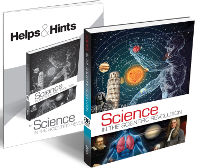 The third course, Science in the Scientific Revolution, begins with Copernicus and Vesalius, two authors whose books were both published in 1543. Publication of these two books is generally thought of as the inauguration of the Scientific Revolution. Astronomy and the human body—the topics of study in the first unit—tie in with the work of both Copernicus and Vesalius.
The third course, Science in the Scientific Revolution, begins with Copernicus and Vesalius, two authors whose books were both published in 1543. Publication of these two books is generally thought of as the inauguration of the Scientific Revolution. Astronomy and the human body—the topics of study in the first unit—tie in with the work of both Copernicus and Vesalius.
Among the other scientists featured in the course are Girolamo Fracastoro, Michael Servetus, Tycho Brahe, Galileo Galilei, Johannes Keppler, Francis Bacon, Jan Baptist van Helmont, William Harvey Rene Descartes, Blaise Pascal, Robert Boyle, Marcello Maophighi, Antoni van Leeuwenhoek, Sir Isaac Newton, Gottfried Wilhelm Leibniz, and Ole Christensen Rømer.
Examples of just of few of the other topics presented in conjunction with the featured scientists are the human eye and telescopes taught in conjunction with the study of Johannes Kepler; Robert Boyle's discoveries about air, vacuums, sound waves, and the function of lungs; and Ole Christensen Rømer and the his discoveries about travel at the speed of light.
The course continues with scientists and their discoveries up through the end of the seventeenth century, touching on astronomy, anatomy and physiology, botany, physics, fossils, and chemistry as well as the nature of science itself, the scientific method, and the relationship between faith and science. For example, Lesson 42 on Rene Descartes offers one of the best explanations I've read about Descartes' religious beliefs in relation to his scientific theories. This is the sort of learning that equips students for further education in the sciences in a way that helps them maintain a Christian worldview.
Science in the Age of Reason
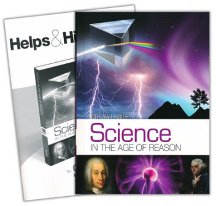 The fourth course in this series, Science in the Age of Reason, picks up in the early part of the eighteenth century and continues through the turn of the nineteenth century (the early 1800s).
The fourth course in this series, Science in the Age of Reason, picks up in the early part of the eighteenth century and continues through the turn of the nineteenth century (the early 1800s).
Reflecting the scientific discoveries of the time, this text seems even more interesting to me than the previous three. Scientific advances of that era ranged far and wide as do the topics covered here. Students will learn about such topics as Fahrenheit’s development of a numerical scale for measuring temperature, Leonhard Euler’s discovery that different colors of light have different wavelengths, Henry Cavendish’s work with gases, why Lavoisier is called the father of modern chemistry, Spallanzani’s yucky experiments with gastric juices, and Carl Friedrich-Gauss’s work with magnets and Earth’s magnetic field. Topics range across astronomy, anatomy, immunology, entomology, geology, meteorology, chemistry, and physics.
Experiments in this book get more challenging. Some of them might take two or more attempts to get the desired results.
Philosophical controversies play a larger role in this text than in the previous ones. It was during the Age of Reason that a number of scientists began to move away from belief in God as the creator. Instead, they looked for natural explanations for what they observed in the world. As Dr. Wile explains, some such as Georges-Louis Leclerc, Comte de Buffon questioned the age of the earth. James Hutton and others rejected belief in a worldwide flood. Buffon and other scientists began to promote the idea of spontaneous generation as an explanation for the source of living things. And Erasmus Darwin, the grandfather of Charles Darwin, suggested the possibility “that all warm-blooded animals have arisen from one living filament….” (p. 157).
Dr. Wile discusses the controversies and the philosophies, countering occasionally with his own young-earth, creationist arguments. Because Dr. Wile mentions these issues more frequently in this volume than others, parents who hold different beliefs might want to discuss their own views when they are contrary to those stated in the text.
Science in the Industrial Age
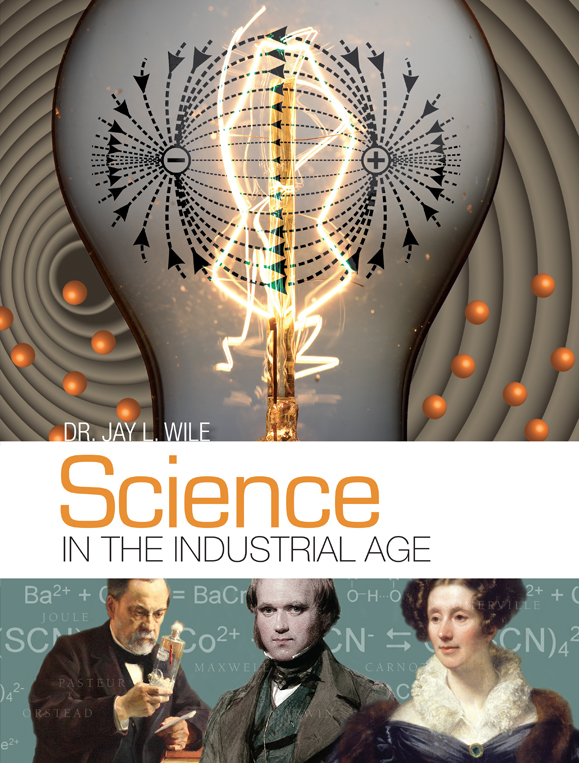
Scientific advances during the nineteenth century are covered in Science in the Industrial Age. As in the other courses, students learn about these advances through stories of the scientists themselves.
Students learn how amazing advances in machines and production in both the nineteenth and twentieth centuries were made possible by the work of scientists such as Nicolas Sadi Carnot (heat engines and thermodynamics), Michael Faraday (electricity and magnetism), and James Prescott Joule (thermal energy). Knowledge in the biological sciences had similar breakthroughs with life-saving discoveries such as Louis Pasteur’s work regarding diseases and vaccines and Joseph Lister’s work with antiseptics to destroy germs. Lamarck’s fledgling attempts to advance a theory of evolution were further developed by Charles Darwin during the nineteenth century. Communications leapt forward with the telegraph (developed by Charles Wheatstone, William Fothergill Cooke, and Samuel Morse) and the telephone (developed by Alexander Graham Bell). Thomas Edison’s work to create functional light bulbs had far-reaching consequences within his lifetime. Students also learn about Alfred Nobel’s work with explosives and his ironic legacy of the Nobel Prizes, including the Nobel Peace Prize. These stories and those of many more scientists and their discoveries teach students about developments across the scientific spectrum.
For Junior High
Science in the Atomic Age might be considered the final book in this series. It is written for junior high and differs somewhat from the rest of the series, so I review it separately.
Summary
I’m not aware of any other science curriculum similar to this. While it is a Christian curriculum, it avoids the intensely apologetic flavor of some others that spend a lot of energy arguing for creationism and against evolution. Nevertheless, it helps students view science from a Christian worldview. The use of hands-on activities to introduce lessons, the multi-age format, and the chronological approach are also features of this series that are likely to appeal to many families. This seems to me an excellent way to teach science and an approach that should have exceptional appeal for classical educators.
Dr. Wile’s goal is that students completing this series will be well prepared for junior high science courses. Given the solid science content and a format that really draws students into the lessons, I expect that goal will easily be met.




